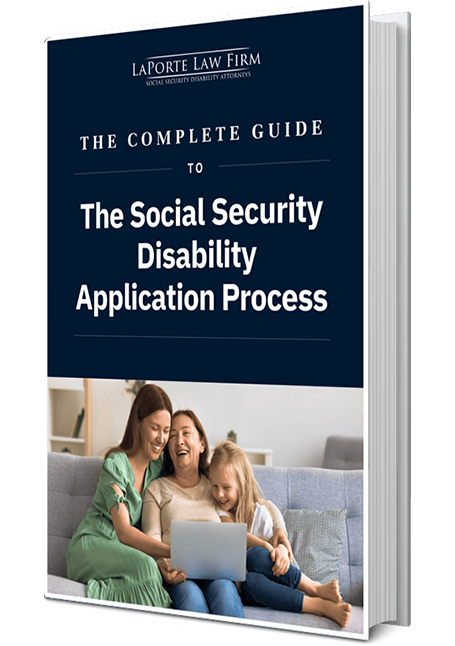
Receiving disability benefits can provide financial relief if you cannot work due to a disability or an illness, but it might not always cover all your expenses. Fortunately, you may be eligible for additional assistance through food stamps, also known as the Supplemental Nutrition Assistance Program (SNAP). To determine your eligibility, you’ll need to consider various factors, including your income and household size. Let’s take a closer look at the specifics of qualifying for food stamps while receiving SSDI benefits.
What Are Food Stamps?
Food stamps, officially known as the Supplemental Nutrition Assistance Program , or SNAP, is a federally funded initiative in the United States designed to assist low-income individuals and families in purchasing nutritious food. Eligible participants receive monthly benefits through an electronic benefit transfer (EBT) card, which works like a debit card and can be used at most grocery stores and supermarkets. However, SNAP benefits are strictly limited to food purchases and cannot be used to buy nonfood items, alcohol, tobacco, or hot, ready-to-eat meals.
Can You Get Food Stamps While on Disability?
Yes, individuals receiving disability benefits, including Social Security Disability Insurance (SSDI) or Supplemental Security Income (SSI), are generally eligible to apply for food stamps (SNAP). SNAP provides eligible households with financial assistance for food purchases, and receiving disability benefits does not automatically disqualify you from participating. However, your disability income, along with any other household income, will be considered when determining eligibility.
The amount of SNAP benefits you receive will depend on various factors, including your household size, income, and allowable expenses. SNAP eligibility is based on your gross income (before deductions) and net income (after deductions), with some states having more lenient rules for households with elderly or disabled members.
In some states, individuals receiving Supplemental Security Income may be automatically eligible for SNAP benefits, or they may be eligible for an expedited application process. However, eligibility requirements for SNAP can vary by state, and different states may have different income limits and benefit amounts. It’s important to check with your local SNAP office or state-specific guidelines for details.
Additionally, receiving SNAP benefits will not affect your disability benefits (SSDI or SSI). SNAP is a separate program and does not count as income in determining your disability benefit amount.
Disability income is considered: While disability benefits such as SSDI or SSI are counted as income for SNAP eligibility, they don't automatically disqualify you from receiving benefits.
State variations: Some states have more streamlined processes for SSI recipients to qualify for SNAP, but specific eligibility criteria can vary. For example, some states exclude a portion of disability income when calculating SNAP eligibility for disabled or elderly individuals.
No impact on disability benefits: Receiving SNAP benefits will not affect your SSDI or SSI payments, as these programs are separate.
You may want to visit your local county office or state website for specific rules that apply in your state. If you live in California, you can apply online here.
Eligibility for Food Stamps While on Disability
Eligibility for SNAP benefits while receiving disability income depends on several factors:
Disability status
Individuals receiving disability benefits can qualify for food stamps. This includes various types of benefits such as:
- Supplemental Security Income: Individuals receiving SSI are generally eligible for SNAP benefits, although the eligibility determination can depend on income, household size, and other factors. Many states have special rules for SSI recipients, including automatic or expedited SNAP eligibility in some cases. However, SSI income itself counts toward the income limit for SNAP, so the total amount of assistance can vary.
- Social Security Disability Insurance: People receiving SSDI benefits can also qualify for SNAP. Like SSI, SSDI is counted as income when determining eligibility, but receiving SSDI benefits alone does not disqualify someone from SNAP. The household’s total income, size, and expenses will determine the amount of SNAP benefits.
- Certain veteran’s disability payments: Veterans’ disability compensation, such as VA disability benefits, can count as income when determining SNAP eligibility. Like SSDI or SSI, the veteran’s disability payments will be factored into the income calculation, but they do not automatically disqualify an individual from receiving food assistance.
While disability benefits (SSI, SSDI, or VA disability compensation) do not automatically disqualify someone from receiving SNAP, the income received from these benefits is counted in the eligibility determination. The total income must fall within the state's SNAP limits.
Income requirements
Eligibility for SNAP depends largely on household income. Disability benefits are generally counted as income. However, certain expenses related to disability (such as medical costs) can often be deducted, which may lower your countable income and potentially increase your SNAP benefits. This is a key provision for households with disabled or elderly members. Note, however, that allowable deductions vary by state.
Medical expenses over $35 per month for individuals who are disabled or elderly (age 60+) can be deducted from your household’s income. This includes expenses such as:
- Prescription medications
- Doctor visits
- Health insurance premiums
- Some transportation costs related to medical care
- Medical equipment
- Other out-of-pocket medical expenses
By lowering your countable income through medical deductions, you may either become eligible for SNAP if you weren’t initially, or you may qualify for a higher benefit amount.
Besides medical expenses, there are other allowable deductions that can lower your income, including:
- Child care costs for working families
- Shelter costs (rent, mortgage, utilities) exceeding a certain threshold
- Dependent care expenses
- Standard deductions for all households, regardless of disability status
So, in general terms, yes, disability benefits are counted as income for SNAP eligibility. However, disability-related medical expenses can often be deducted from your income, potentially lowering your countable income and increasing your SNAP benefits. This deduction applies primarily to households with disabled or elderly members.
Household size
The number of people in your household significantly affects your eligibility for food stamps. Larger households typically have higher income limits, meaning that a larger household can earn more and still qualify for benefits.
In most cases, your household must meet both the gross and net income limits described below to be eligible for SNAP and receive benefits.
Gross income means a household’s total, nonexcluded income, before any deductions have been made. On the other hand,
net income means gross income minus allowable deductions. A household with an elderly or disabled person only has to meet the net income limit, as described on the elderly and disabled page.
If all members of your household receive Temporary Assistance for Needy Families (TANF), Supplemental Security Income, or in some places, other general assistance, your household may be deemed “categorically eligible” for SNAP because you have already been determined eligible for another means-tested program.
The information provided in the table below applies to households in the 48 contiguous states*, the District of Columbia, Guam, and US Virgin Islands that apply for SNAP between October 1, 2024, through September 30, 2025.
Household Size | Gross monthly income (130% of poverty) | Net monthly income (100% of poverty) |
1 | $1,632 | $1,255 |
2 | $2,215 | $1,704 |
3 | $2,798 | $2,152 |
4 | $3,380 | $2,600 |
5 | $3,963 | $3,049 |
6 | $4,546 | $3,497 |
7 | $5,129 | $3,945 |
8 | $5,712 | $4,394 |
Each additional member | +$583 | +$449 |
*SNAP gross and net income limits are higher in Alaska and Hawaii.
Resources limit
SNAP has a resource limit, which includes money in bank accounts and certain types of property. Notably, some resources, like the home you live in and vehicles used for transportation, are typically excluded from this calculation. Individuals receiving SSI or SSDI may also have certain resource exemptions.
SNAP has both income and resource limits that determine eligibility. While income is the most significant factor, resources (assets) are also considered in the eligibility determination.
- Types of resources counted
Countable resources generally include:
- Money in bank accounts (checking, savings, etc.)
- Cash
- Stocks and bonds
- Certain real estate holdings (other than the home you live in)
- Vehicles (other than those excluded)
- Other nonexcluded property
- Exempt resources
Certain resources are excluded from the SNAP resource calculation:
- The home you live in: Your primary residence is not counted as a resource.
- Vehicles: Typically, one vehicle per household used for transportation is excluded from the resource limit. In some cases, a second vehicle may also be excluded if it’s necessary for a household member’s work, medical needs, or other special circumstances.
- Retirement accounts: Some states may exclude certain types of retirement accounts (e.g., IRAs, 401(k)s), but this can vary.
- Personal property: Furniture, clothing, and other household goods are not counted.
- Exemptions for SSI/SSDI Recipients
Individuals receiving SSI typically have more lenient resource limits for SNAP eligibility. SSI recipients often have a resource exemption for the first $2,000 of liquid resources for single individuals ($3,000 for couples), and in many states, SSI recipients are automatically eligible for SNAP or have an expedited application process.
Resource limits for SSI recipients are usually higher than those for non-SSI households, and certain assets (like your home and car) may be excluded from the resource calculation.
SSDI recipients are subject to the same resource limits as other SNAP applicants, but the amount of resources allowed may vary by state. SSDI benefits are counted as income in the SNAP eligibility calculation, but SSDI recipients may also benefit from certain resource exemptions.
- Resource limits for non-Seniors/non-disabled households
The standard resource limit for most households is $3,000 in countable resources (such as cash or money in a bank account). For households with a disabled or elderly member, the limit is often higher, typically $4,500 in countable resources if at least one member of the household is age 60 or older, or is disabled. These amounts are updated annually.
However, certain resources are NOT counted when determining eligibility for SNAP:
- A home and lot;
- Resources of people who receive SSI;
- Resources of people who receive Temporary Assistance for Needy Families (also known as welfare); and
- Most retirement and pension plans (withdrawals from these accounts may count as either income or resources depending on how often they occur).
Depending on which state you live in, you may be able to have more resources than the above limits and still be eligible for SNAP. Most state agencies have adopted broad-based categorical eligibility (BBCE), which allows state agencies to align income and resource limits with their TANF-funded programs.
Work requirements
While most SNAP recipients are expected to meet work requirements, individuals on disability benefits are often exempt from these obligations. This means you may not need to participate in work programs to qualify for SNAP.
Most able-bodied adults without dependents (ABAWDs) are required to meet work requirements to qualify for SNAP benefits. These requirements typically include:
- Working a certain number of hours per week (usually 20 hours)
- Participating in a job training program or other approved activities
Work requirements can vary by state, but the federal rule is that ABAWDs must meet these requirements to receive benefits for more than three months in a 36-month period, unless they are exempt.
- Exemptions for individuals with disabilities
Individuals receiving disability benefits (such as SSDI, SSI, or certain veteran’s disability benefits) are exempt from work requirements. This means:
- If you are receiving disability benefits and have a qualifying disability, you are typically not required to meet the work or work training requirements to qualify for SNAP.
- SSI recipients are specifically exempt from these requirements because SSI is a disability program, and those receiving SSI are considered to have a disability that limits their ability to work.
- Exemptions for other categories of individuals
In addition to individuals receiving disability benefits, other groups may be exempt from work requirements, including:
- Children under age 18 or adults over age 60
- Pregnant women and individuals with a child under age 6
- Caretakers of disabled individuals
- Full-time students in some cases
- State-specific variations
While the federal rules apply broadly, some states may have additional exemptions or requirements for people with disabilities. For example, states may have additional rules for workfare programs or other local programs that could involve some form of participation, even if exempt from federal work requirements.
Application Process
To apply for food stamps while on disability, you’ll need to submit an application through your state’s SNAP program. This application will require details about your household income, resources, and expenses, and may require verification of your disability status.
The following are the steps and factors to consider in applying for SNAP benefits:
1. Application submission
You must submit an application through your state’s SNAP program. Each state has its own process and application system, but all states are required to follow federal guidelines. Most states allow you to apply online, by mail, or in person at local SNAP offices.
You will be asked to provided the following information in your SNAP application:
- Household income: You will need to provide information about all sources of income in your household, including disability benefits (such as SSDI, SSI, or veterans’ disability payments). This includes both earned income (wages) and unearned income (disability benefits, pensions, etc.).
- Resources: You will also need to report your household’s countable resources (such as money in bank accounts, vehicles, and other assets). However, certain resources, like your primary residence or a vehicle used for transportation, may be excluded from the resource calculation.
- Expenses: Information about certain expenses will be required, including rent or mortgage payments, utilities, child care costs, and medical expenses (for households with elderly or disabled members). Some medical expenses related to disability can be deducted from your income when calculating SNAP eligibility.
2. Verification of disability status
While disability status itself is not always required to be verified for all types of disability-related exemptions (such as medical deductions or work exemptions), you may be asked to verify your disability if it is a key factor in your eligibility. Such is the case if you’re applying for special exemptions related to your disability or you’re receiving SSI/SSDI). Common forms of verification include:
- Disability benefits award letters (SSI, SSDI, etc.)
- A doctor’s statement or other medical records (in some cases)
3. Special considerations for people with disabilities
As mentioned earlier, people receiving disability benefits may be exempt from certain eligibility requirements, such as work requirements. While you will still need to submit the standard application, the disability status may be used to determine your exemptions, deductions, or eligibility for additional assistance.
Recertification for SNAP
SNAP recipients are generally required to recertify their eligibility periodically. This means that after an initial approval, households must go through the process again after a set period to continue receiving benefits.
The recertification period typically ranges from six months to one year, but it can vary by state. For example, some households may be required to recertify every six months, while others, such as those with elderly or disabled members, may have a longer recertification period (e.g., 12 months).
FAQs
Yes, individuals on Social Security disability can qualify for SNAP benefits based on their income and household size.
Yes, Social Security disability is counted as income when determining eligibility for SNAP benefits.
Individuals receiving disability benefits such as SSI or SSDI may qualify for Medicaid, housing assistance, utility assistance, and other support programs, depending on their income, circumstances, and the specific eligibility rules in their state.
For the most accurate and up-to-date information, it is recommended that individuals reach out to their local social services or government agencies to learn about available programs and how to apply. Each program may have different eligibility requirements, and the application processes may vary by state.
The amount of SNAP benefits you receive is influenced by household size, income, allowable expenses, and the specific rules of your state’s SNAP program. Household size and income are the most important factors, but allowable expenses (such as medical costs or shelter expenses) can reduce your net income and potentially increase your benefits. State-specific rules may affect eligibility and the exact benefit amount, so it is important to consult your local SNAP office for the most accurate and detailed information.
Disability status may affect eligibility for SNAP, especially in terms of work requirements and medical expense deductions. However, the amount of benefits is primarily determined by household income, household size, and any allowable deductions for expenses (such as shelter and medical costs). Disability status can lead to higher benefits if it qualifies the household for specific deductions or exemptions, but it is the household’s income and size that mainly drive the benefit calculation.
For those receiving disability benefits such SSI or SSDI benefits, it is important to take note of any available deductions, as they can reduce net income and potentially increase SNAP benefits.















